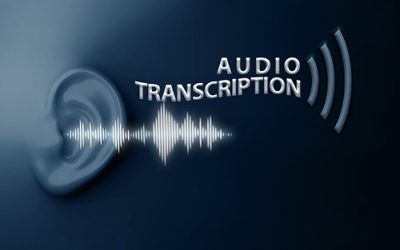
In the world of insurance claims, efficiency is paramount. Claims adjusters are responsible for investigating claims and determining how much compensation the insurer is liable for. They play a pivotal role in ensuring that policyholders receive timely and accurate settlements. However, the sheer volume of documentation relating to the policyholders’ proof of loss, supporting evidence, inventory of losses, etc., recorded statements, and interviews can make the claim adjuster’s job overwhelming. This is where insurance transcription services come to the rescue. By skillfully transforming audio or video recordings of claim-related interactions into written text, expert transcriptionists can enhance the efficiency of claims processing, ensuring a seamless and hassle-free experience.
Let’s explore how these solutions can revolutionize claims processing for adjusters, saving time, reducing errors, and improving customer satisfaction.
Challenges of Claims Adjustment
Claims management is a challenging process. It involves:
- claims reporting
- receipt of claims by the company
- claims files and procedures
- fraud detection and prevention
- claims assessment
- claim processing
- timely claim processing
- complaints and dispute settlement, and
- supervision of claims-related services
Claims adjusters are responsible for investigating insurance claims and determining how much compensation the insurer is liable for, and settling the claims. Their tasks include gathering information from various sources, such as policyholders, witnesses, experts, and law enforcement. To document this information, claims adjusters rely on:
- Recorded statements: Recording interviews and conversations with involved parties enable adjusters to gather crucial details about the incident.
- Field notes: They take extensive notes while inspecting the damage or incident scene.
- Witness interviews: Conducting interviews with witnesses helps corroborate the facts surrounding the claim.
- Policyholder testimonies: Gathering statements from policyholders is a critical part of the process.
- Documentation: Adjusters manage numerous documents, including police reports, medical records, and repair estimates.
The challenge lies in managing this deluge of information efficiently and accurately while adhering to strict deadlines and regulatory requirements.
How Transcription improves Claims Processing Workflow
There are several ways insurance transcription solutions can contribute to a more efficient claims processing workflow:
- Improves accuracy: Digital transcription agencies can deliver highly accurate and detailed documentation of all claim-related conversations, including phone calls, interviews, and recorded statements. By converting spoken words into written text correctly, insurance transcription eliminates the possibility of misinterpretation or miscommunication that can arise from reliance on handwritten notes or memory. This accuracy is vital to making fair settlements and minimizing disputes.
- Saves time: Professional support for converting recorded audio content into written transcripts saves adjusters’ valuable time. Instead of manually transcribing hours of recorded statements, claims adjusters can focus on analyzing the information and making informed decisions. Transcribed documents can be reviewed and analyzed more quickly than audio or video recordings.
- Facilitates easy retrieval: Claims adjusters and other insurance professionals can easily search, skim, or reference specific information within the text. This makes it easier to reference key details during the claims process, which facilitates prompt decision-making and a speedy claims investigation process.
- Drives collaboration: Text documents support easy sharing and distribution of claim-related information among various stakeholders, such as claims adjusters, underwriters, legal teams, and third-party experts. With written records of all interactions, communication and collaboration among team members is streamlined, leading to quicker resolutions.
- Supports regulatory compliance: Transcribed documents offer consistent and standardized records across different claims. Clear documented evidence of all interactions and decisions made during the claims process can help insurance companies comply with legal and regulatory requirements with regards to documentation and record-keeping.
- Aids fraud detection and investigation: Textual records of claim-related conversations can aid in fraud detection and investigation. Investigators can search for keywords or patterns that may indicate fraudulent activities, helping them identify potential red flags and handle them in a focused manner.
- Enhances accessibility: Text documentation enhances accessibility for individuals with hearing impairments or language barriers. It allows them to review claim-related information in a written format, ensuring equitable access to insurance services.
Choose the Right Transcription Service
In addition to accuracy and timeliness, properly formatting recorded statements is crucial for the accurate and expedited review of insurance claim details. For this, choosing an insurance transcription service with experience in the field is crucial. Experts are well-versed in diverse formatting and template requirements. They can deliver the written statements in the preferred format. When selecting a transcription solution, claims adjusters should also consider factors such as privacy, data protection and cost savings in terms of time and resources. By leveraging professional transcription services, adjusters can focus on what they do best – assessing claims and providing policyholders with the support and resolution they need during challenging times.



